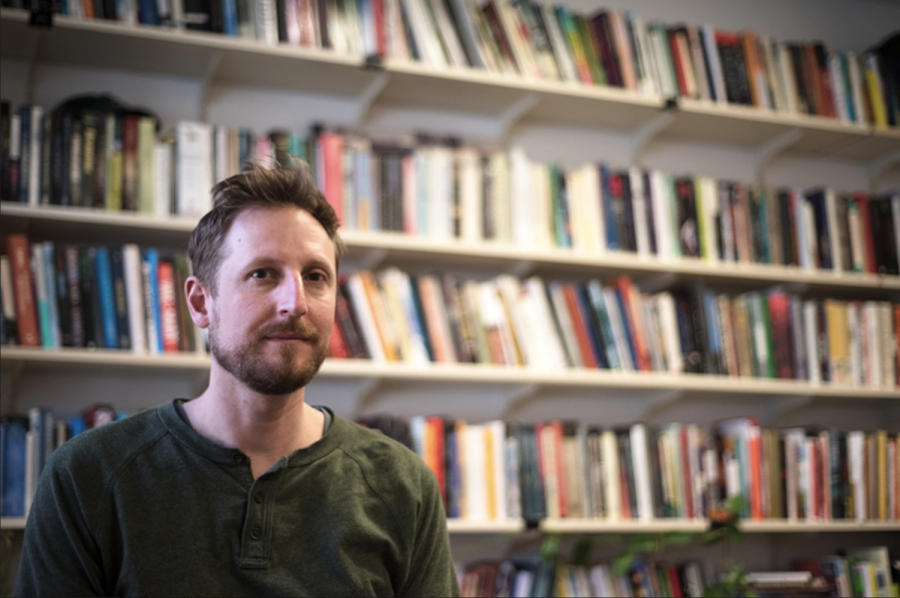Geography professor adds art to classes
Professor Harlan Morehouse sits in his Old Mill office April 8. Morehouse uses the example of melting glaciers as an example of where art, social justice and environmental science meet.
May 31, 2019
As climate change becomes an increasing social and political concern, students are turning to art to provide context that science alone can’t provide.
At UVM, environmental science curriculums are progressively including art as a different way to absorb class material.
First-years in the Rubenstein School of Environmental and Natural Resources participated in a lab at Fleming Museum where their analysis of artwork demonstrated changes in land use history in Vermont.
The progression of serene agrarian landscapes to art makes statements about pressing climate change issues.
First-year Kate Zoeller emphasized the importance of learning about the different meanings the land we live on has for different people.
“Going to the Fleming Museum with my natural resources class allowed me to encounter diverse ways that people connect with and view nature,” Zoeller said.
Professor Harlan Morehouse teaches several classes which combine science and art such as Cultural Ecology and Political Ecology.
Morehouse believes this approach gives students a more complex view of issues by incorporating multiple stories which may be missing from traditional academic approaches.
By connecting cultural and natural components of environmental science, students also delve deeper into contemporary issues, like climate change, Morehouse said.
“Given that we are facing considerable environmental challenges, my approach is to draw from multiple disciplines to build a broad and diverse understanding of environmental change,” Morehouse said.
Morehouse uses the example of melting glaciers as an example of where art, social justice and environmental science meet.
Though empirical studies of changes in the environment are important, they don’t always account for the cultural impact of these changes, Morehouse said.
“These frameworks are not particularly well-equipped to address the cultural, if not spiritual, impacts of glacier loss. How, for example, does glacier loss impact those cultures that emerged in the presence of ice?” he said.
Art has also been used as a way to engage students with their surroundings.
Natural History and Human Ecology classes at UVM ask their students to submit hand-drawn sketches of species they encounter while doing phenological studies, or the study of seasonal changes in the environment.
“I get to enjoy my surroundings and have actually learned alot about Vermont species by sketching outside once every few weeks,” first-year Thea Bjornson said.
The use of this type of culturally conscious scientific information in education is important for the future, Morehouse said.
“In making it possible for better futures to take hold, art has a crucial role to play,” he said. “Without it, we risk losing stories that will serve us well.”







